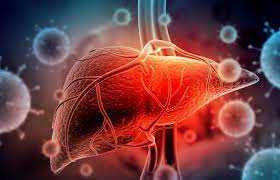
Hepatitis D
Hepatitis D, also known as “delta hepatitis”, is a liver infection caused by the hepatitis D virus (HDV). Hepatitis D only occurs in people who are also infected with the hepatitis B virus. People can become infected with both hepatitis B and hepatitis D viruses at the same time (known as “coinfection”) or get hepatitis D after first being infected with the hepatitis B virus (known as “superinfection”).
Hepatitis D can be an acute, short-term infection or become a long-term, chronic infection. Hepatitis D can cause severe symptoms and serious illness that can lead to life-long liver damage and even death. There is no vaccine to prevent hepatitis D. However, prevention of hepatitis B with hepatitis B vaccine also protects against future hepatitis D infection.
Mode of Transmission
HDV is mainly transmitted through activities that involve percutaneous (i.e., puncture through the skin) and to a lesser extent through mucosal contact with infectious blood or body fluids (e.g., semen and saliva), including;
- Sex with an infected partner
- Injection-drug use that involves sharing needles, syringes, or drug-preparation equipment
- Birth to an infected mother (rare)
- Contact with blood from or the open sores of an infected person
- Needle sticks or exposures to sharp instruments
- Sharing items (e.g., razors and toothbrushes) with an infected person
HDV is not spread through food or water, sharing eating utensils, breastfeeding, hugging, kissing, hand holding, coughing, or sneezing.
Sign and Symptoms
- Fever
- Fatigue
- Loss of appetite
- Nausea
- Vomiting
- Abdominal pain
- Dark urine
- Clay-colored bowel movements
- Joint pain
- Jaundice
These signs and symptoms typically appear 3–7 weeks after initial infection.
In contrast, most people with chronic hepatitis D have few symptoms until complications develop, which could be several years after they were infected. Some symptoms of cirrhosis include;
- Weakness
- Feeling tired/lethargy
- Weight loss
- Swelling of the abdomen
- Swelling of the ankles, called edema
- Itching skin
- Jaundice
Causes and Risk Factors
- HBV infection
- People chronically infected with HBV
- Vertical Infection (Infants born to mothers infected with HDV)
- Unprotected sex
- Homosexuality People who inject drugs
- Household contacts of people with HDV infection
- Health care and public safety workers at risk for occupational exposure to blood or blood-contaminated body fluids
- Hemodialysis patients
Diagnostic Test
Cases of hepatitis D are not clinically distinguishable from other types of acute viral hepatitis, diagnosis can be confirmed only by testing for the presence of antibodies against HDV and/or HDV RNA. HDV infection should be considered in any person with a positive hepatitis B surface antigen (HBsAg) who has severe symptoms of hepatitis or acute exacerbations.
Medical Treatment
No treatment is available for HDV infection specifically. Pegylated interferon alpha has shown some efficacy, but the sustained virologic response rate (a measure of viral clearance) is low (25%). New therapies are being evaluated. In cases of fulminant hepatitis and end-stage liver disease, liver transplantation may be considered.
Conclusion
Hepatitis D, a viral infection caused by the Hepatitis D virus (HDV), is unique in that it can only infect individuals who are already infected with Hepatitis B virus (HBV). This condition can either present as a superinfection in individuals with chronic HBV infection or as a coinfection in those with acute HBV infection. HDV transmission occurs through exposure to infected blood or other bodily fluids, including sharing needles or through sexual contact.
The clinical manifestations of Hepatitis D are similar to those of acute hepatitis and can range from mild to severe. Symptoms commonly include fatigue, jaundice, nausea, and abdominal pain. However, severe cases can progress to fulminant hepatitis and liver failure, posing significant health risks.
Diagnosing Hepatitis D involves serological testing to detect specific antibodies against HDV and HBV antigens, along with molecular techniques such as polymerase chain reaction (PCR) to confirm viral presence. Differential diagnosis with other forms of hepatitis, particularly Hepatitis B, is crucial for accurate identification and management. Treatment options for Hepatitis D are limited, primarily due to its reliance on HBV for replication. Current therapies mainly target HBV with medications such as pegylated interferon-alpha. However, achieving sustained virological response is challenging, and in advanced cases, liver transplantation may be necessary.
Prevention strategies play a critical role in reducing the burden of Hepatitis D. These include vaccination against HBV, which also indirectly protects against HDV infection, as well as implementing harm reduction measures like safe needle practices and barrier contraception.
In conclusion, Hepatitis D remains a significant public health concern, particularly in regions with high Hepatitis B prevalence. Continued research efforts are essential to develop more effective therapies and preventive strategies for this complex viral infection. Early detection, prompt intervention, and comprehensive public health initiatives are crucial in mitigating the impact of Hepatitis D on affected individuals and communities worldwide.



